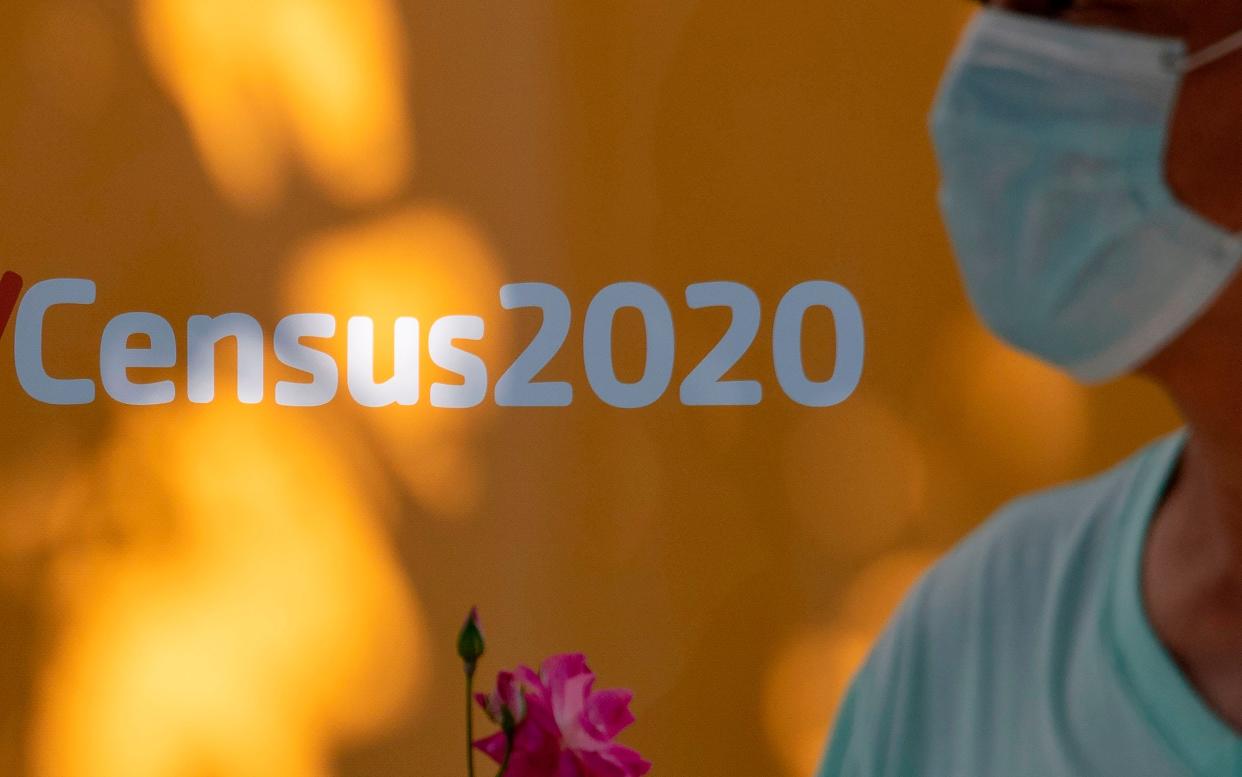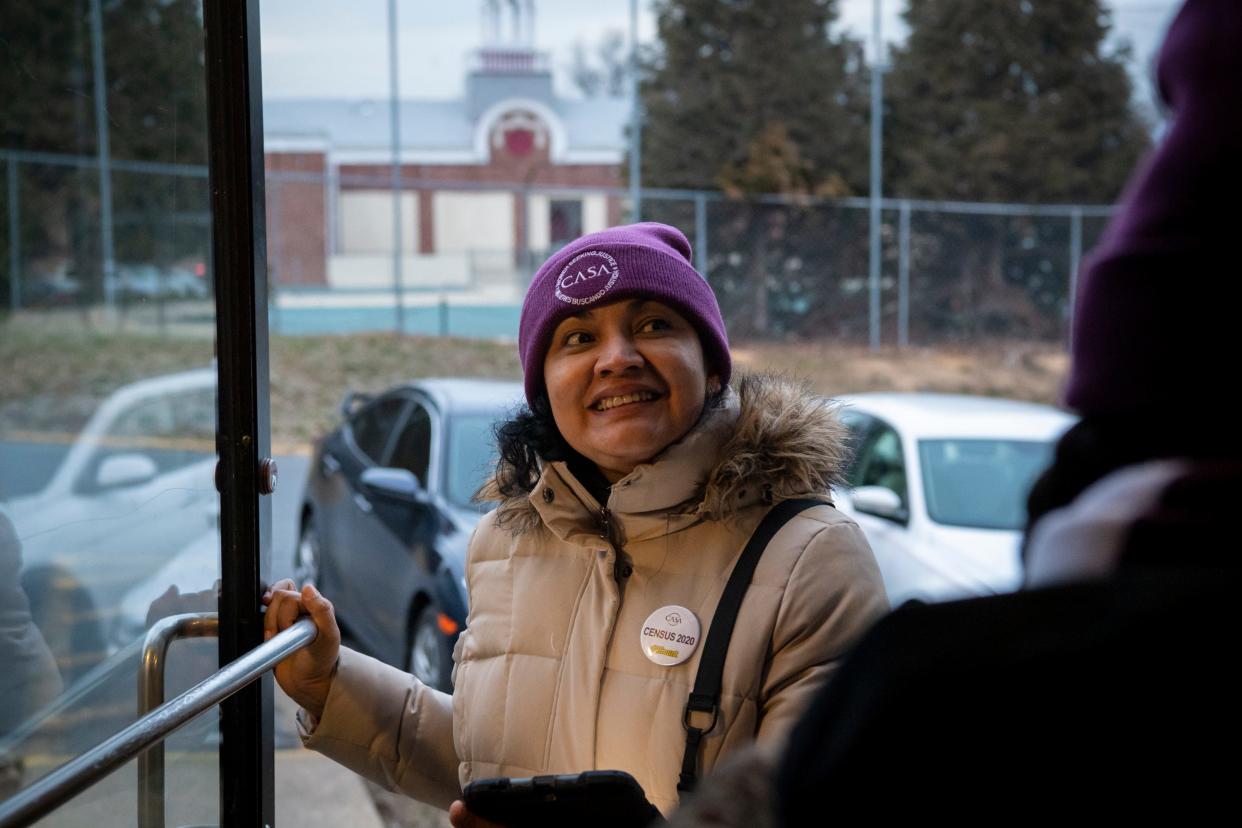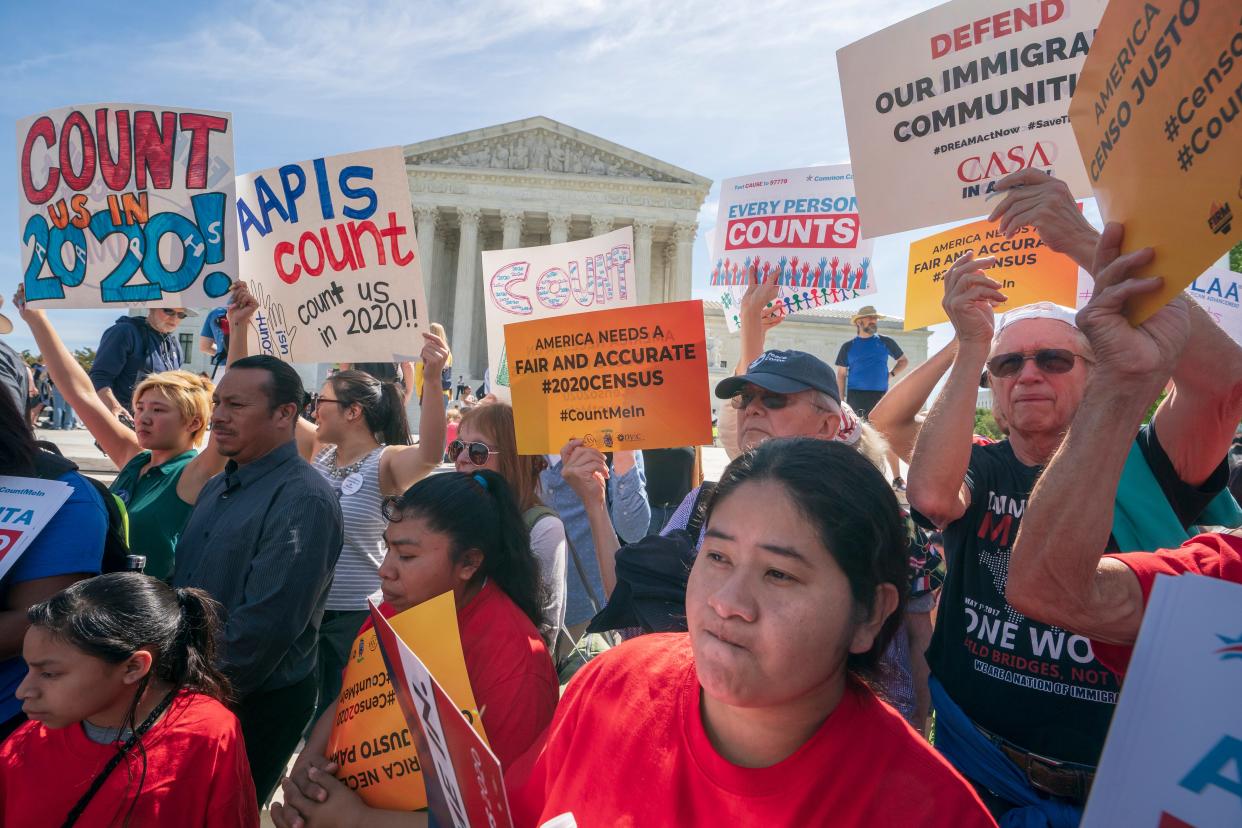Census shows US more diverse than ever, but many people of color likely went uncounted because of COVID-19, Trump, experts say
The nation is more diverse than ever, but despite the increase in nonwhite Americans in the 2020 Census count, communities of color could be significantly undercounted, with high numbers of Indigenous, Black, Asian and Latino Americans unaccounted for in rural and urban areas, according to experts and activists.
White Americans remained the nation's largest racial group, even as that population decreased by about 8.6% since 2010, according to Census Bureau officials. The Hispanic and Latino community ballooned by about 23%, the Asian American population surged by about 36% and the number of Black Americans grew by about 6%.
But many experts said there are likely many people of color across the nation who were not counted.
Undercount data will not be released until next year, Census Bureau officials said Thursday during a briefing after the release of 2020 census data that included race and ethnicity informationused in legislative redistricting efforts.
The cost of people being left uncounted can be significant, from diminished political representation at the federal, state and local levels, to the loss of billions of dollars in government funds vital to communities.
Black, Hispanic/Latino, Asian American and Native American communities have been undercounted in the past. In the 2010 census, Black Americans were undercounted by 2.1%, Latinos by 1.5% and American Indian and Alaska Natives living on reservations by nearly 5%. By comparison, the non-Hispanic white population was overcounted by 0.8% in 2010.
One reason for undercounts include distrust of governments that have often not looked like or represented people of color. Another factor is the higher proportion of people of color who are renters, a demographic that tends to have lower response ratescompared with homeowners. Rural residents, including some Native American communities, may also be undercounted because new Census Bureau measures designed to protect participants' privacy could cause data errors for smaller communities, experts said.
"We know we had an undercount in our last census. So, let's be honest about where we're at. We have been struggling to get good census numbers for decades," said Glenn Harris, president of Race Forward, a racial justice nonprofit based in Oakland, California, that works to achieve racial equity.
Unique 2020 challenges, including the COVID-19 pandemic and Trump administration policies perceived as hostile to people of Hispanic/Latino heritage and immigrant communities, may have further hindered response rates and made an accurate population count even more difficult, members of nongovernmental and voting rights groups said.
At one point, then-President Donald Trump tried to add a citizenship question to the census, which was blocked by the U.S. Supreme Court in 2019, and his term ended before he could implement a plan to have the census exclude undocumented immigrants from Congressional apportionment considerations.Voting rights advocates said those moves and Trump's anti-immigrant rhetoric likely made members of some groups, especially Latinos, more reluctant to participate in the census.
Population numbers: Census: US sees unprecedented multiracial growth, decline in the white population for first time in history

"The pandemic played a big role, but we can't forget the political interference that we saw during the last census," said Terry Ao Minnis, senior director of census and voting programs at Asian Americans Advancing Justice, a nonprofit legal aid and civil rights organization based in Los Angeles. "That all has played a role in whether people participate or not, whether it was from fears created about participating to just sheer confusion: Who is at my door? Should I open the door? Should I not open the door? Should I open the door because of COVID reasons or not open the door because of COVID reasons? Should I not open the door because of fear of -government reasons? There was clearly a lot going on."
Politicization and the pandemic also likely exacerbated existing hurdles for getting accurate counts of different racial and ethnic groups, voting rights activists and census data analysts said.
"If you already had some distrust of government, the rhetoric around immigration or the foreign-born was heightened during the last administration," said Diana Elliott, principal research associate at the Urban Institute,a Washington, D.C.–based think tank that concentrates on social and economic policy research. "Then you had the government asking you to complete a survey but not really feeling reassured that information would be kept safe and confidential. You might not be inclined to respond to the census."
The pandemic created more instability for many families of color that were already struggling, said Clarissa Martinez, a vice president of UnidosUS, a Latino nonprofit advocacy based in Washington, D.C.
"In our communities, a lot of people move frequently for work. Add a pandemic to that. We had folks who had to move to somebody else’s household and some people even lost their homes," she said. "When we were doing our focus groups and polling with Latinos during our census campaign, one of the things that emerged among people who had not responded – and one of the impediments – was that they didn’t have their (census) postcard or other information."
Social distancing and lockdown protocols also made it tougher for census workers to reach many renters at the height of the pandemic, said Elliott, of the Urban Institute.
"Reports are coming out now that it was especially hard for enumerators to get access to apartment buildings during the pandemic … to follow up if for some reason they didn't respond on their own," which could influence the quality of the count, she said.
Undercount worries: 2020 census 'emergency' threatens to leave out communities of color and rural Americans

State population data, including the gain or loss of Congressional seats, and bureau projections released in the spring led the National Association of Latino Elected and Appointed Officials Educational Fund to express surprise that states with large Latino populations, including Arizona, Florida and Texas, didn't gain more seats in Congress. Texas picked up two seats, Florida added one but Arizona's number remained the same. California and New York, also states with large Latino communities, will each lose a seat.
New York needed just 89 more people to have avoided losing a Congressional seat, noted Javier Vasquez Jr., programs director for power and democracy for the Advancement Project, a multiracial civil rights organization based in Washington, D.C. He blamed Trump administration policy and rhetoric for deterring Latino New Yorkers from responding to the census.
"We'll be losing one seat in the U.S. House of Representatives by under a hundred people. That hundred people would be the equivalent of just 20 households of five not responding back. If there wasn't fear among Latinos, New York might be gaining a Congressional member instead of losing one," he said. "And that’s the case in other places, also."
Making the effort: How groups are 'pulling out all the stops' to accurately count people of color for census 2020

Overcounts, cases in which people are counted more than once, could also have a harmful effect on communities of color, Vasquez said. Overcounts are more likely to involve affluent populations in which white people are disproportionally represented and can dilute the population numbers of other racial and ethnic groups, he said.
The pandemic may have amplified that situation with the double-counting of affluent families who left a main city residence for a second home, as was the case for many in New York, and college students being counted on campus and at home, Vasquez said.
The census helps determine how trillions of federal dollars are distributed over the next decade. The allocation of hundreds of billions of dollars per year in grants, direct payments, loans and loan guarantees is based on state population totals. Undercounts can reduce the money available to states and communities for vital Medicaid, child nutrition, housing vouchers, student loans and highway construction.
Maria Teresa Kumar, CEO of Voto Latino, said she was worried about Trump's effect on the count of Latinos, a younger community with many members now reaching voting age, and the wider ramifications for governmental representation and community needs.
"My concern is that there's going to be a larger underreporting of Latinos because of who was steering the administration at the time the Census took place. It was someone that was very toxic to the Latino community, who was trying to create citizenship as part of the census and just general fear," she said.
Contributing: Mabinty Quarshie
This article originally appeared on USA TODAY: 2020 Census: COVID-19 pandemic and Trump policies could see undercount
